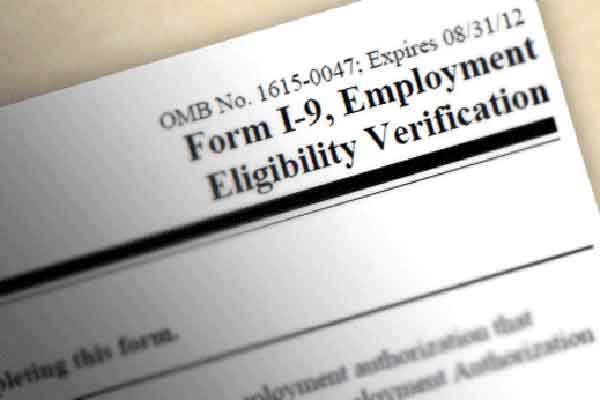鄭博仁律師:A Guide to the Latest Updates on Form I-9
01/02/2018 鄭博仁聯合律師事務所
The United States Citizenship and Immigration Services (USCIS) provides the Form I-9 for employers to verify the identity and work authorization of individuals who have been hired for employment in the United States. Though all employers in the United States are tasked with making sure their new hires have completed the document on or before the employee’s first day of work, the complexity of completing the form correctly may leave even some professionals uncertain about how to proceed.
In addition, the acting director of Immigration and Customs Enforcement (ICE) recently announced that the agency will quadruple the number of Form I-9 on-site worksite inspections in the coming year. The process, initiated by serving an employer with a Notice of Inspection, will require providing copies of Forms I-9 in as few as three business days. Failure to do so, and even minor paperwork mistakes, can result in penalties.
It’s now more important than ever to understand the Form I-9 requirements and use the most current form so that your organization remains compliant with these guidelines.
Who must complete a Form I-9?
All businesses in the United States with employees hired after November 6, 1986, are responsible for ensuring that newly hired employees complete a Form I-9, regardless of citizenship. The process requires participation by both employee and employer to properly complete the form.
- By signing the Form I-9 and providing acceptable documentation (as noted on the Form I-9 List of Acceptable Documents), an employee confirms his or her identity and that he or she is authorized to be employed in the United States. The employee presents their choice of documents from the list of acceptable documents to the employer, to prove his or her identity and eligibility to legally work.
- Upon presentation and verification of the acceptable document(s), the employer signs the Form I-9 attesting to the fact that the documentation appears genuine, and retains a copy of the Form I-9. Employers are required to accept whatever forms of identification prospective employees present, provided they are on the list of acceptable documents. Mandating that employees provide certain documents on the list (such as a driver's license and Social Security card), but refusing others that the list classifies as valid, is considered a discriminatory hiring practice.
Per the USCIS' definitions, the term "employer" includes recruiters and referrers for a fee, including agricultural associations, agricultural employers, or farm labor contractors. An "employee" is defined as anyone who performs labor or services in the United States for an employer in return for wages or other remuneration. Volunteers, unpaid interns, independent contractors, or those engaged in some types of casual domestic employment (such as babysitters) are not required to complete a Form I-9. However, employers should ensure accurate classification of workers to mitigate potential violations.
What changes have been made to the Form I-9?
Effective September 18, 2017, employers must begin using the new Form I-9 (with a revision date of 07/17/17 N) for all newly hired employees; any previous version of the Form I-9 is no longer considered valid. It is not necessary for employers to request current employees to provide a new Form I-9.
Aside from using the updated Form I-9, the changes to the form itself are minor. For example, some basic edits were made to language used on the instructions page, and the List of Acceptable Documents (List C). For example, the Consular Report of Birth Abroad (Form FS 240) was added and, with the exception of a Social Security Card, all list C documents were renumbered.
The cost of non-compliance
Though the changes may not seem substantial, it's imperative for all U.S.-based employers to comply with the most recent standards and requirements for employment verification. Employers that do not comply with the current Form I-9 paperwork process may be subject to civil fines ranging from $216 to $2,156 per form.
Visit the USCIS website to download a copy of Form I-9, and follow updates as they happen. Should your business receive a Notice of Inspection and/or need assistance with Form I-9 compliance, our team can help.
E-Verify
E-Verify is a free Internet-based system that helps employers verify that new hires are legally authorized to work in the United States. It is voluntary for most businesses. Only a few states mandate E-verify for private employers. Certain public employers and certain federal contractors and subcontractors may be required to use E-verify under applicable laws.
E-Verify works by comparing the information employees provide on the Employment Eligibility Verification Form (Form I-9) against government records from the Social Security Administration and the Department of Homeland Security. Generally, if the information matches, the employer receives an "Employment Authorized" response in E-Verify.
Employers who are not required by law to use E-verify but choose to do so voluntarily must ensure that they are using the system consistently by running all new hires through it.
You can visit the E-verify site at http://www.uscis.gov/e-verify or contact us for assistance or learn more about applicable requirements. Please note employers are still required to complete a Form I-9 for all new employees regardless of whether they are enrolled in E-verify.

